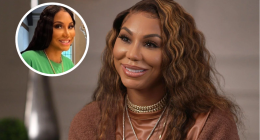
Three big health issues for kids -Kids may face mental health issues as school begins amid a pandemic
Q: What might parents and teachers expect to see regarding children’s mental health as they begin school this fall?
A: Worry or anxiety during this period would be expected and is a normal response. Children’s adjustment to the new school format, whether it’s remote or hybrid, would vary a lot based on age and a child’s individual personality or temperament, as well as the family’s overall experience of the pandemic. Both the disease aspects of the pandemic and also the economic stressors—if a parent or caregiver has lost a job, if there has been income or residential instability—are all part of the child’s experience and will play a role in the child’s adjustment. Some children could be experiencing the pandemic as a traumatic event—for instance if they’ve lost a grandparent or a loved one to COVID complications.
In younger kids, psychological distress might manifest as new or worsening behavioral problems, difficulty separating from parents or caregivers, or somatic symptoms such as aches and pains or changes in sleep or appetite. Older kids can also experience somatic symptoms, as well as fear, nervousness, stress, irritability, and hypervigilance. In the academic context, symptoms could include difficulty concentrating, difficulty with motivation, or school refusal.
A recent study in the U.S. that surveyed parents suggests that about 27% of parents and roughly 14% of children are experiencing worsening mental health problems during the pandemic. Rates of distress were highest among families with young children, who may have lost access to child care, and among single-parent families. We also know that some communities or subgroups have been disproportionately affected by the pandemic, including underresourced or minority communities, and children in these communities may be at higher risk for mental health concerns. Also, children with preexisting mental health concerns, children who have learning disabilities or any other challenges that have required individualized learning plans, and children with medical vulnerabilities may experience greater adjustment issues or mental health concerns at this time.
Q: What would you say are the biggest school-related stressors for kids right now?
A: Remote learning is a challenge. Children generally learn well when actively engaged and in environments where they feel safe and socially connected. While there’s a lot that one can do online—I think there’s been a huge surge in innovation and adaptation—remote learning requires a level of sustained attention and emotional regulation that is a very big demand, developmentally, for kids in middle school and younger. And it’s a demand on all sides: for students; for parents supporting their kids, having to act as IT technicians and part-time teachers while managing their own lives and their own jobs; and for teachers. It’s a big learning curve for everyone.
Right now, our physical safety as well as our social connectedness are being challenged. We’ve been calling it home schooling, but the reality is that it’s crisis schooling at home. Worries about safety activate the limbic system, which can interfere with learning in school. We are still in this mass disaster of global proportions. And emotional health affects academic learning.
On the positive side, at least for kids who have some hybrid schooling options, the opportunity to be able to see their friends and have some form of in-person social interaction is something that a lot of kids are looking forward to.
Q: What can parents and educators do to help kids during this tough time?
A: For parents, contacting your primary care provider for your child is always a good place to start, to get an initial consultation or evaluation. It’s also easier now to access telehealth services, including for mental health, because the rules and regulations around insurance coverage for telehealth have changed during the pandemic. However, there’s the issue of the digital divide—some families may not be able to access telehealth services reliably, so resources available through the school, such as school psychologists and social workers, and community-based resources, are very important.
Asian and Black Americans are reporting increased experiences of racism and discrimination amid the pandemic, and we’re hearing about discrimination and bullying among students as well. For parents, teachers, and caregivers alike, it is important to check in to help children understand that bullying and the stigma that comes with judging people, is harmful for everyone—particularly because it might keep people from seeking appropriate COVID-19 testing and care—and that people sometimes cope with their worries by blaming others.
In the classroom, whether in person or online, teachers can help by focusing on socialization and fostering a sense of community. Building social connections among peers into the school day intentionally, and finding ways to sustain those connections through the school year, will be important.
It’s also important for kids to take planned breaks from virtual classes. That means a real break—even if it’s just a quick walk—not just switching from computers to phones.
Parents and teachers can also provide realistic reassurance. Saying to kids “I’m sure things will be fine” is both global and nonspecific, and kids don’t really buy that. They are experiencing the pandemic in various ways, so it is important to be specific, and to talk with kids about why their school elected for either hybrid or fully remote and the steps that the school is taking for safety. The point is to talk with them in a transparent age-appropriate way, and to give realistic reassurance that parents and the school are doing everything they can in terms of following public health guidelines and balancing the children’s academic and social needs.











